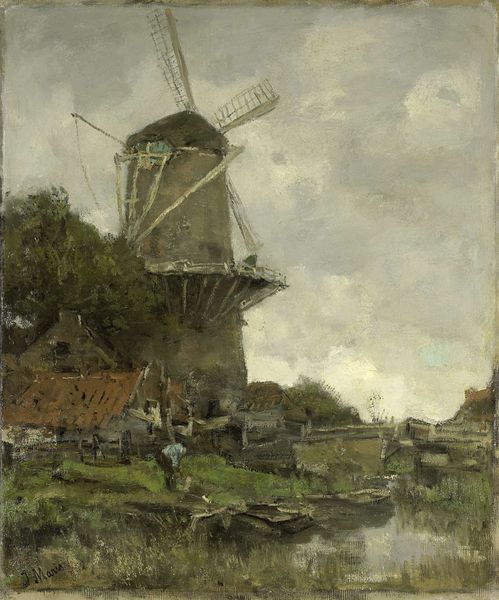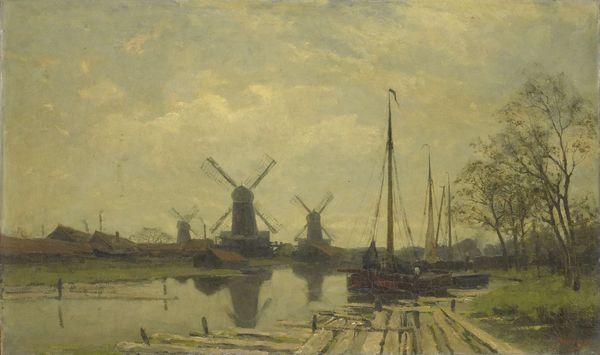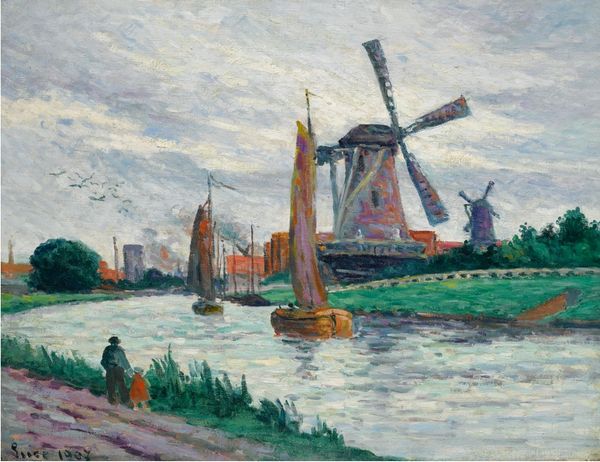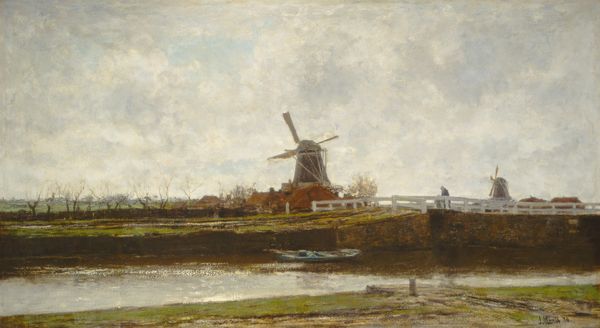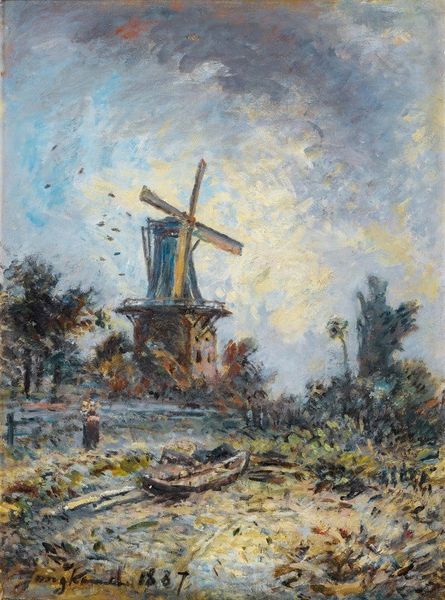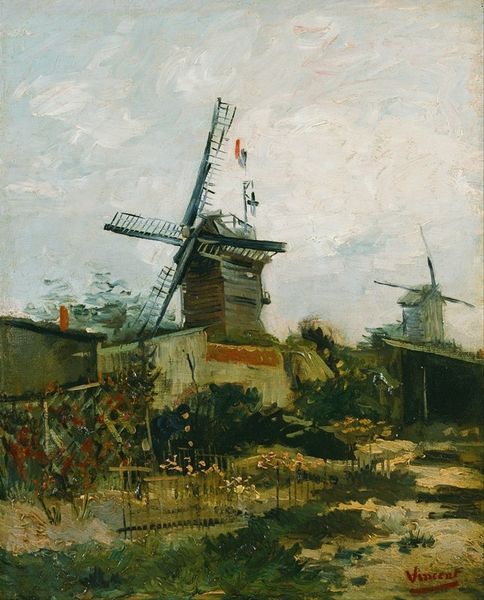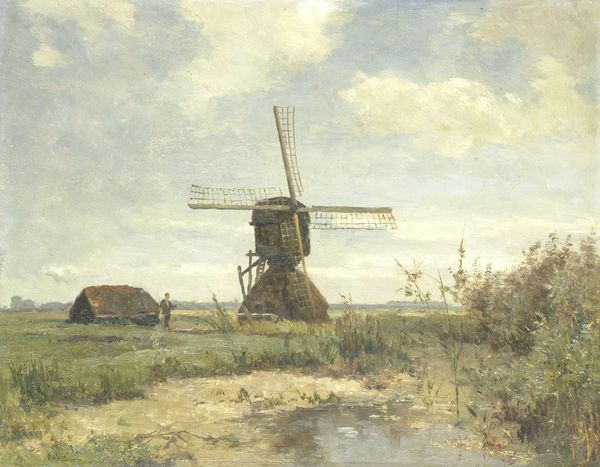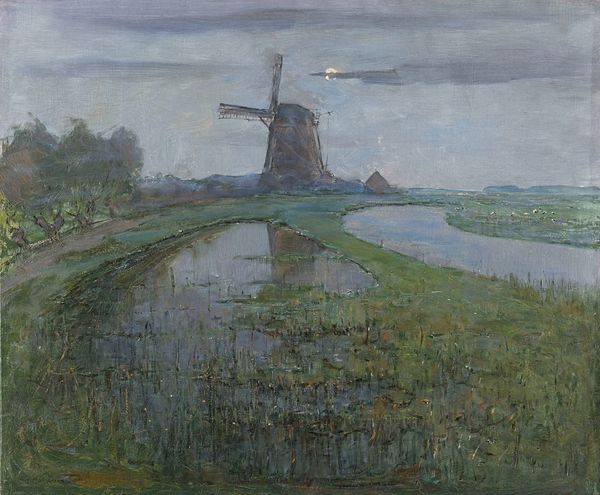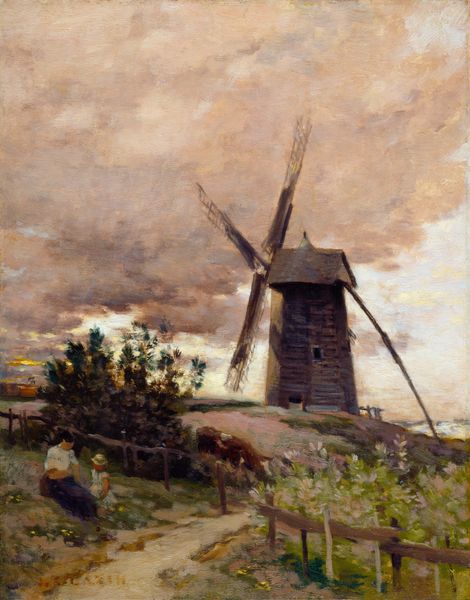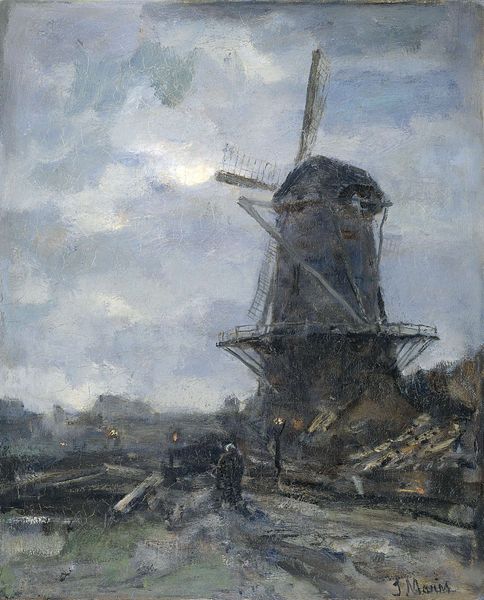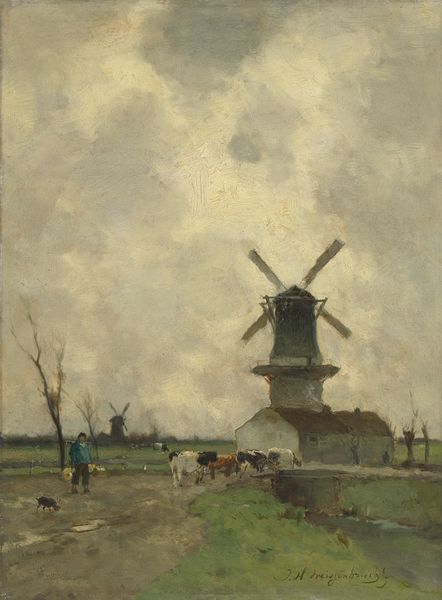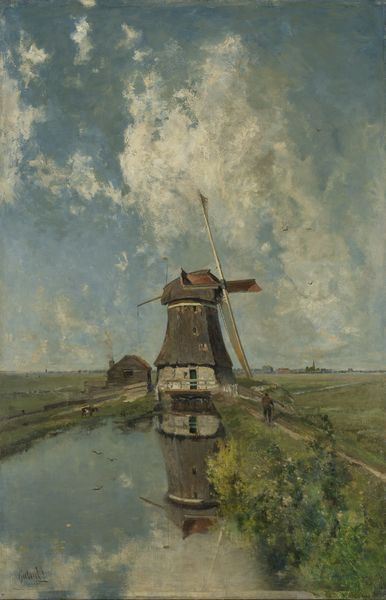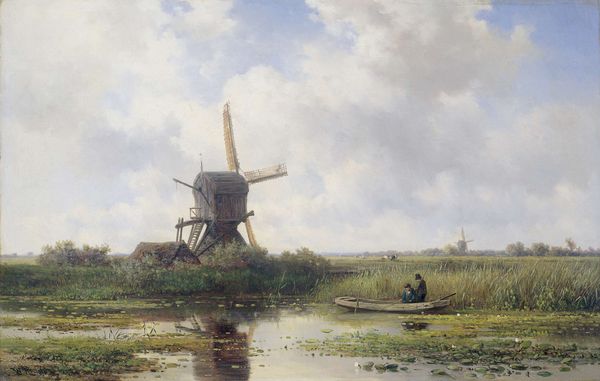
plein-air, oil-paint
#
dutch-golden-age
#
impressionism
#
plein-air
#
oil-paint
#
landscape
#
impressionist landscape
#
oil painting
Copyright: Public Domain: Artvee
Curator: Johan Barthold Jongkind's "Halage En Hollande," dating from 1867, is a compelling example of early Impressionist landscape painting, rendered in oil. What captures your attention about it? Editor: Immediately, the muted color palette strikes me. The subtle variations in tone across the sky evoke a serene, almost melancholy mood. There's also something very tactile about the way Jongkind applies the paint – the layers and textures feel incredibly present. Curator: Indeed. Note the almost scientific examination of light, typical of plein-air painting, where Jongkind was concerned with capturing transient atmospheric conditions. The composition is subtly structured, wouldn't you agree, through a horizon line that bisects the canvas into almost equal halves. Editor: The horizon serves a functional purpose here to emphasize the material reality of land reclamation, so common to this region of the Netherlands. You also see several of these windmill devices that symbolize productivity and mastery over a challenging terrain. They represent tangible value and labor transformed into resources. Curator: Your reading emphasizes the sociological elements, certainly important to consider. But look closely: observe how the brushstrokes are applied; they almost dematerialize form, anticipating a later dissolution that becomes so crucial to high impressionism and even abstraction. Note the structure of the windmills themselves, their placement – vertical accents rhythmically scattered, animating what could otherwise be a very still composition. Editor: However, consider how these visual effects are not merely aesthetic decisions. Oil paint applied en plein air allowed artists to document specific environmental contexts. Jongkind’s decision to represent these windmills in such a light calls attention to them as both a symbol and a product of human engagement with the land, suggesting a more nuanced reading that extends beyond formalism. Curator: Certainly a valid point. Both the structures of painting, like line and color, as well as laboring itself give structure to what it means to live a particular way. Editor: I would agree. Thinking about how art's visual grammar interfaces with its history definitely leads to enriched encounters.
Comments
No comments
Be the first to comment and join the conversation on the ultimate creative platform.

